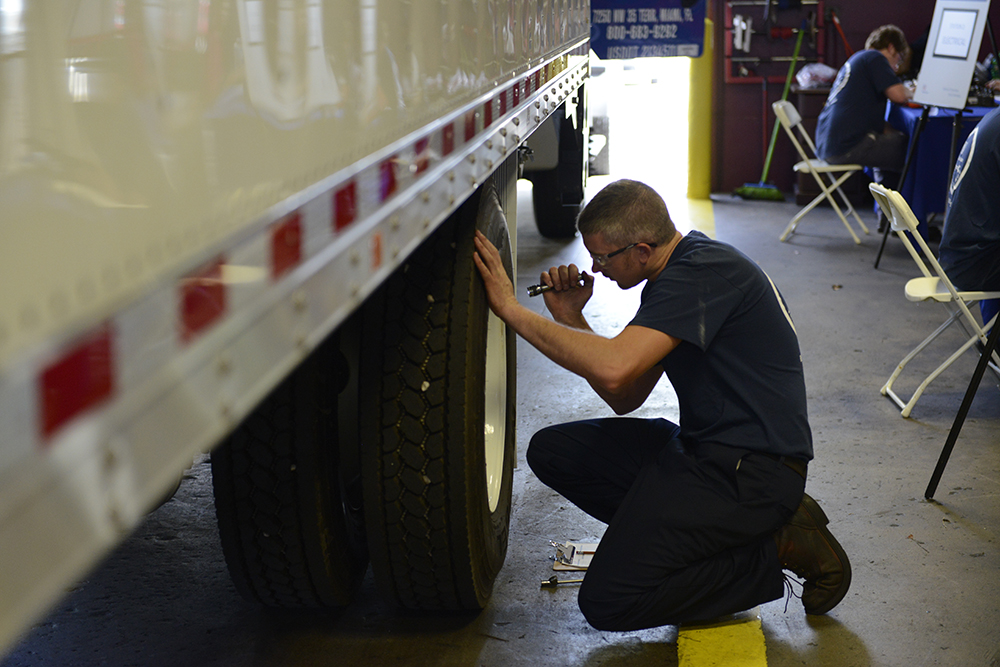When unplanned downtime takes place for any vehicle in your fleet, the potential losses can negatively impact your bottom line. It doesn’t have to be that way.
Challenges for fleets just seem to be mounting, from high diesel costs to parts and components shortages to the proverbial driver and tech shortages. The supply chain issue which has impacted availability of parts and components needed to not only manufacture new trucks but, just as important, maintain existing and older vehicles, continues to plague the industry. But there are things that fleets can do to mitigate the risks.
The reality is most fleets are finding themselves unable to purchase or lease new trucks, making them more dependent than ever on the trucks they have and that means making sure that you get the maximum life out of the vehicles in your fleet.
Preventive maintenance is the first step
Fleets must do complete regular preventive maintenance (PM) on every vehicle in a fleet regardless of its age and condition. Although the FMCSA requires an annual full inspection of vehicles, many fleets fortunately regard that as a minimum requirement. Scheduled maintenance is often influenced by OEMs and components manufacturers’ recommendations and warranties. Fleets must also ensure that vehicles are compliant with the schedule and that means keeping track of each vehicle’s maintenance records.
In 2018, FleetOwner posted an article discussing the importance of preventive maintenance. Just 3 years later, in the midst of pandemic and supply chain problems, the publication posted an article with even greater urgency, “Why PM compliance matters now more than ever.” This latter article notes that a 2020 report from the American Transportation Research Board found that “Repair and maintenance make up 9% of a fleet’s total average marginal cost of operation.” The article also states, “We all know that older assets need extra attention and for those assets, the fleet is extending beyond their normal operating cycle, ensuring maintenance is scheduled is even more critical than it is for newer vehicles.”
What isn’t factored into the maintenance cost cited above is the amount of money lost when a vehicle needs unscheduled repair and can’t be put back on the road for a specific period of time.
Why proactive maintenance matters
Proactive maintenance means understanding where, why, and when problems occur, the root causes of why vehicles break down, and addressing these issues before vehicle failures actually happen (which would be reactive maintenance). It goes beyond simply odometer readings and the age of an asset. This, however, relies on data, and that data relies on fleets having the telematics and maintenance software in place to perform the analytics necessary. Think of proactive maintenance as PM on steroids.
Every time any work is performed on a vehicle, that information needs to be entered into a database, tracked and analyzed. This will help identify whether the root causes are caused by technician or driver issues, parts and component problems associated with specific vendors, seasonality which results in more trucks on the road in challenging weather conditions, missed PMs, or any number of other issues. Once you identify where problems have been occurring, you can address them in a timely matter.
If the issues seem to be personnel related, then additional and ongoing training may need to be conducted. If parts and components are showing excessive wear and tear resulting in unscheduled repairs, it might be time to assess your supplier base. A finding that PMs are being missed is easily rectified by mandating compliance. In the current environment, with such extreme shortages leading to a reliance on existing assets, optimizing those assets is more important than ever.
Once you can predict problems and address them ahead of a problem, you not only reduce downtime and repair costs; you also reduce fuel consumption thus lowering costs at a time when diesel keeps rising. If concerns regarding the cost of technology are getting in the way of investing, consider the costs of major repairs when a breakdown occurs rather than handling the problem ahead of time. Also, consider the cost downtime puts on a relationship with customers when delivery appointments are missed.
Bottom line: It’s time to make proactive maintenance part of your overall maintenance practices.




